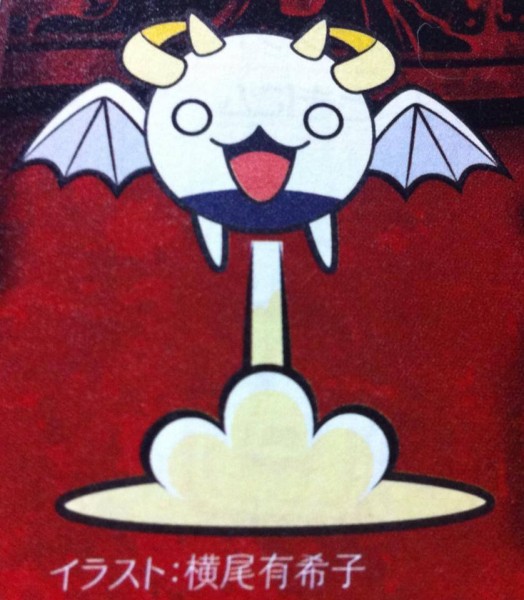
Hello, I’m Yoko Taro. Can you hear me? Alright.
So, this time I’m going to talk about “Making a Character”. Well, I suppose since we’re going to think about a character who has neither hopes nor dreams, it may be better if you don’t read this column. Okay? Is that alright? Well, even if it’s not, I’m going to continue.
The absolutely first thing that must be dealt with when creating a character in an Action RPG is the cost. Cost—. Money. Ahh! That was the sound of your hopes and dreams being blown away! Even so, the story must go on!
If we were to only create characters we liked, we’d seriously run into some grave problems. For example, if we were to make a new Suikoden game, even if we created all 108 of the characters, it would be impossible to make the models for all of them. Events would be cluttered with too many characters on the screen, plus we’d have to create unique faces for each of them; therefore, it would be best if we just killed off at least 90 of those characters…… Simply put, the more characters you have, the more expensive it’s going to get.
That being said, generally in action based games, there are all sorts of enemy characters in which you don’t necessarily see their faces, like those wearing masks. It’s okay to create a sense of mystery from masked enemies. It would be even better for these characters to cover their mouths, like a ninja. Since lining up a character’s mouth with verbal speech is such grueling a task, it would be better if we couldn’t see their mouths moving at all.
Then what about those characters that aren’t human but have a monster-like form? We wouldn’t have to give them specific facial expressions, right? It would be a bit of a relief, but the monster-type form in-and-of-itself becomes a problem. For example, if we have an insect that has reversed-joint appendages, it would be a difficult job for the motion designers. Likewise, if we have insects with wiggling antennas and a bunch of unnecessary appendages, all of those things need to move. Trying to animate a boss enemy like a giant centipede would mean certain death. That’s why the huminoid figure is much more cost efficient. No, actually the most cost efficient form would probably be a floating sphere.
Then we have to worry about clothing and other troublesome things. Anything that might impede movement like a long skirt or a men’s hakama are absolutely out. Additionally, short hair styles are preferred. If it were at all possible, full-body tights or a sort of clothing that would stick tightly to the character’s skin and no hair would be preferable. As far as character designs go, this is the bottom of the bottom but let’s set that aside for a moment.
Well, although the mood is rather gloomy, we still need to save on cost. As a battle action game, we need large bosses, but there is also a device for this. There’s no avoiding the rising costs from designing different bosses with unique movements all the time. That’s why we need to change some body parts, the color, or even change the movement to something that could be shared between multiple bosses. Also, since any game needs bosses, we have to come up with a clever solution with the programming. Money, money, money…… Simply put, bosses mean money. Have you ever thought, “What? You just changed the color.” From the perspective of the developers who know the sorrow that comes with making short to medium length games, they may say, “Yes, you’re right……” This is why there is no way to see the result of our labors without the flow of tears.
So because of this, I often develop my characters by designing the monsters first. We need to decide on how many bosses we need for however many stages. I’d really like to have a boss for every stage, but there just isn’t enough money to do that.
Then, the next thing we need to plan are the events. How long do we work on multiple events…… Well, since I mess up this estimate every time, I can’t say too much about it, but in the end we may or may not be able to fit in the entire scope of the event. Plus, the only character who can wrap up these events has to be the main character.
I’m only saying this here, but actually, when we were working on DOD1, we failed on making many of the events.
We originally planned to have 6 partner characters referred to as “Contracts”, but it would have been impossible to tell the story with that number of characters. Since we couldn’t fit descriptive FMVs into the camp segments like we wanted to, we had to forcefully change the wording, thusly cutting a large chunk out of the original script which made it necessary to add in supplementary explanations in text between missions……
But looking back now, text-based supplementary explanations also felt new…… Simply, at the time many people had pointed it out, we thought, “Ah! So that was it! This would have been junk if we had done that!” I remember how earnestly we made modifications while scratching at our heads and refusing to give in. No, actually, there are many things that we humans may understand if we only try. (<—said in a monotone voice)
……Umm, yeah, hmm. Any remaining money is usually used on the main character and other supporting characters, I guess. Yeah, this is usually how I come up with characters and stuff like that stuff, yeah.
Article originally printed in Issue No. 1311 of Famitsu magazine, published on January 16th. Translation by Rekka Alexiel.
